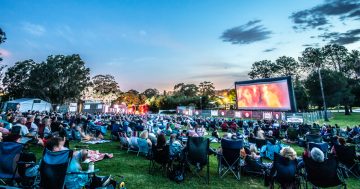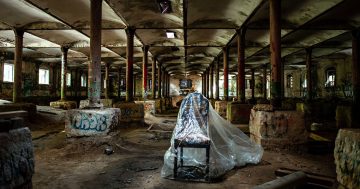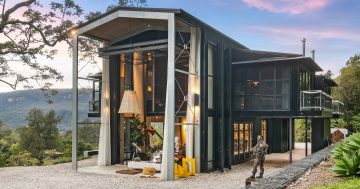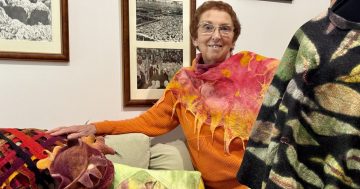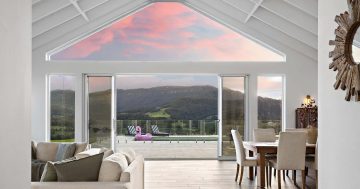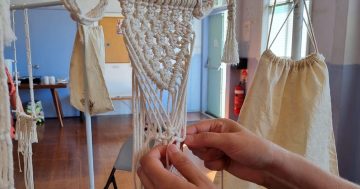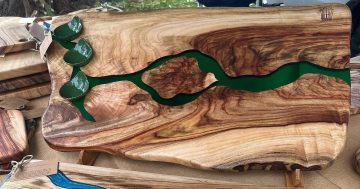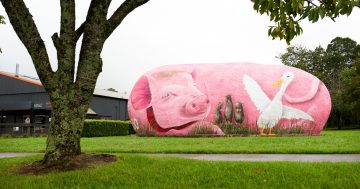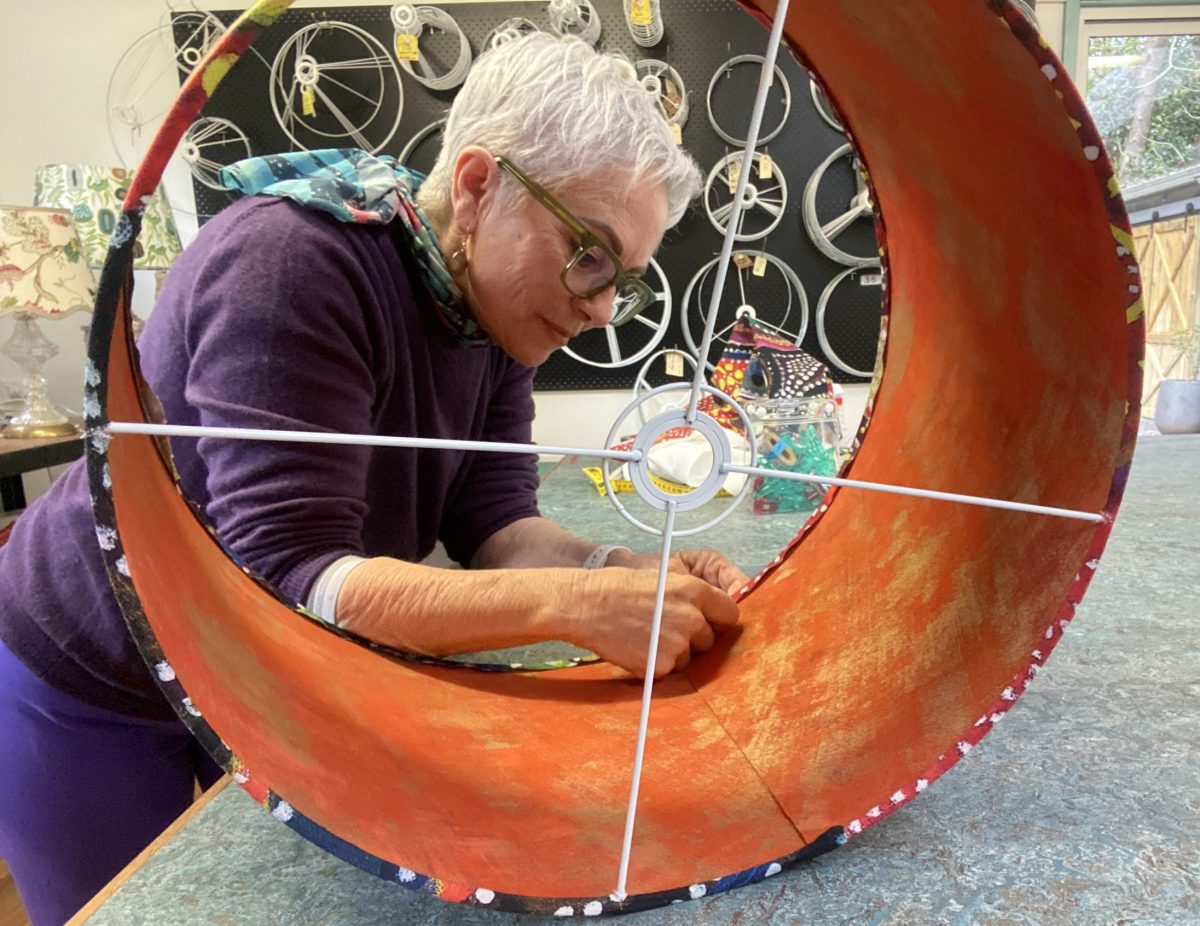
Kate Malfroy doing what she does best at The Lampshade Workroom. Photo: The Lampshade Workroom.
Down the bottom of a garden, at the end of a country lane in Jamberoo, surrounded by rainforest, the escarpment and green rolling paddocks is a studio space that might just light up your day.
The Lampshade Workroom started its life as a nursery shed 35 years ago, back when Kate Malfroy ran a wholesale native plant business with her husband. When Kate took up upholstery, it was transformed into her upholstery shed.
Now, it mostly hosts group classes for people who want to learn from Kate’s mastery of the lampshade.
Lampshades started as a side hustle for Kate, who was an upholsterer for 15 years before COVID hit, and demand became overwhelming.
“People were at home a lot more and had plenty of time to notice things they wanted to improve. They had money to spend and couldn’t spend it on things like travel, so anything to do with home improvements went off,” Kate says.
“I had so many enquiries it was impossible to keep up. The admin was sending me mental.
“I enjoy lampshade making because you still get the pleasure of working with beautiful fabrics to make lovely things, and it can be done relatively quickly.”
She honed in on lampshades – not just the making and repairing of, but the sharing of knowledge via The Lampshade Workroom YouTube channel, private lessons, lampshade parties and group classes.
Classes have only recently recommenced at The Lampshade Workroom itself after this dreamy studio was inundated during the April floods, forcing a complete rebuild and clear out of stock.
“It’s such a beautiful space, and I’m so happy to be back in it,” Kate says.
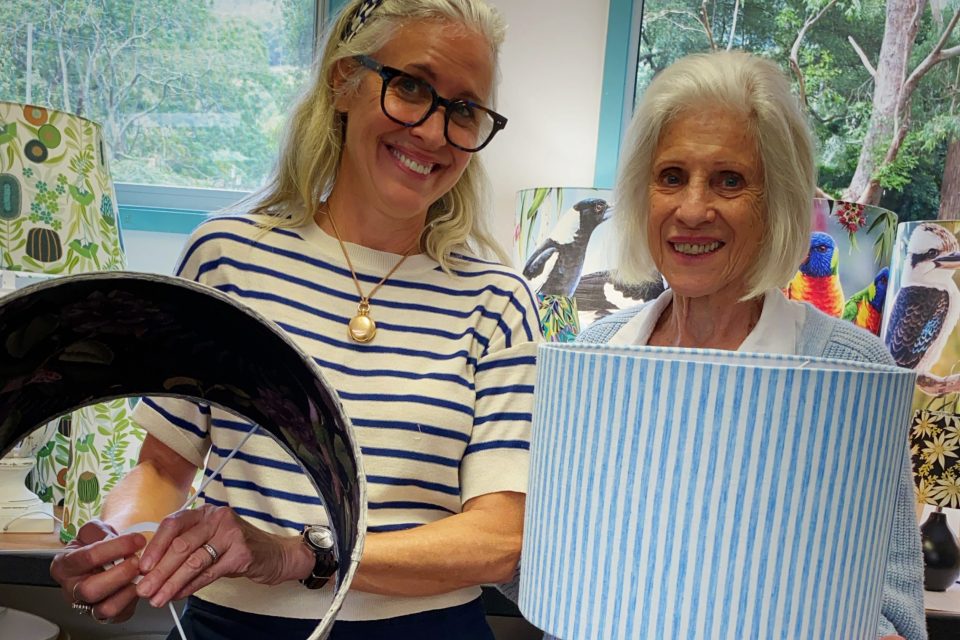

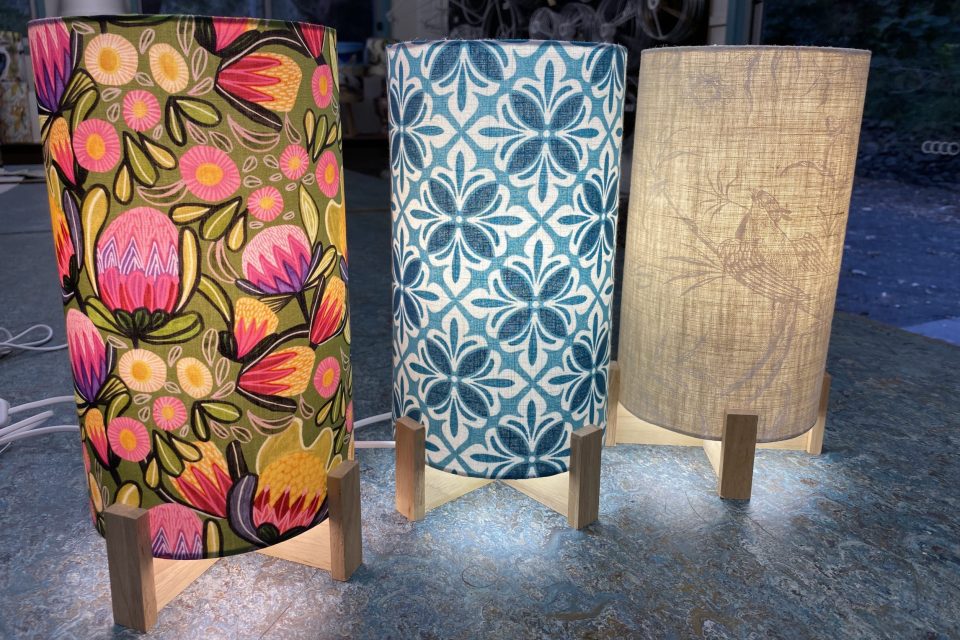

Introduction to Lampshade Making classes take about four hours, including breaks. Students bring their chosen fabric and create their own bespoke lampshade in a range of styles and sizes, or bring a vintage shade and learn how to make it over.
There’s no sewing involved, and students receive detailed information before the class starts, including fabric recommendations.
“Some fabrics are simply better than others for lampshades, and often, they have nothing to do with price. I’ve seen expensive fabrics get less optimal results than the cheap ones – it’s all about how the light shines through the textile itself, and that can differ enormously,” Kate says.
“You want a light or medium-weight fabric of natural fibres like cotton or linen. It’s best to avoid heavier fabrics like upholstery or furnishing fabrics – they’re much harder to work with as a beginner.
“I love seeing what people choose in terms of colours and patterns. People who are a bit more trend-conscious tend to go for the subdued hues you see in ‘home’ magazines. I personally love bright, bold prints – I think there’s never been a better time in this world for beautiful, colourful fabrics. That’s the beauty of these workshops; you bring home something professionally made that’s 100 per cent you.”
Kate says being “crafty” is not a prerequisite to enjoying the class and ending up with a beautiful shade.
“I don’t think anyone has not been thrilled with their results,” Kate says.
“There are two really lovely moments in every class. The first is when this one-dimensional panel you create with the fabric you’ve chosen takes shape and becomes a three-dimensional object as you attach the rings to the panels. I call this the ‘Ooh’ moment.
“Then, at the end, we have a reveal where we put each of the shades onto the lamps and turn on all different bulbs to see what effects we can get. That’s the ‘Aah’ moment, and it’s very exciting.”
For more information or to book a party, private lesson or group class, visit The Lampshade Workroom.








